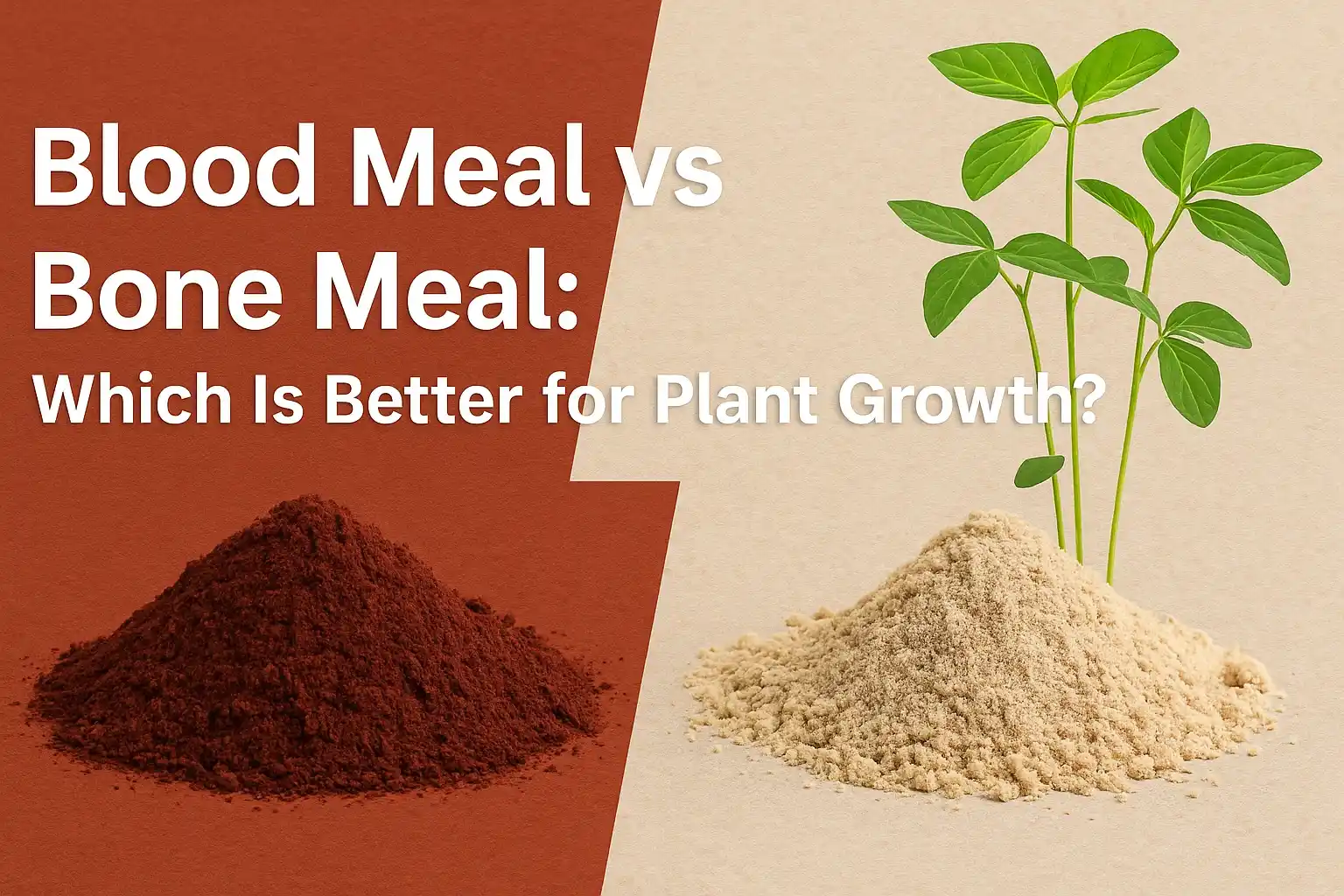Blood Meal vs Bone Meal: Which Is Better for Plant Growth?

Table of Content
-
Introduction: Why Compare Blood Meal and Bone Meal?
-
Nutrient Composition—Nitrogen vs Phosphorus & Calcium
-
Plant Growth Performance and Use Cases
-
Sustainability, Application, and Risk Management
-
Conclusion: Matching Fertilizer to Crop Demand
1. Introduction: Why Compare Blood Meal and Bone Meal?
Organic gardeners and commercial growers alike look to blood meal and bone meal as natural, slow-release ways to boost yields and nourish soils. While both are animal byproduct fertilizers packed with nutrients, their core benefits differ: blood meal is prized for rapid nitrogen enrichment and lush foliage, while bone meal excels at supporting root, flower, and fruit development through long-lasting phosphorus and calcium. Knowing which input your soil and crops really need optimizes both growth and fertilizer investments.
2. Nutrient Composition—Nitrogen vs Phosphorus & Calcium
-
Blood meal: Primarily offers 12–15% fast-acting nitrogen and contains trace iron; its main role is to jump-start photosynthesis, foliage density, and green growth for N-hungry crops (spinach, corn, broccoli).
-
Bone meal: Delivers 10–13% phosphorus and 15–22% calcium, plus small amounts of micronutrients. Phosphorus drives root and flower development, while calcium prevents blossom-end rot and supports cell strength.
-
Comparison: Use blood meal when soil needs an immediate N boost for rapid leafy growth or if you’re correcting yellowing leaves. Use bone meal if the goal is robust rooting, higher fruit set, or if soil is phosphorus-deficient.
3. Plant Growth Performance and Use Cases
Journal trials and garden studies show:
-
Blood meal increases green mass and yield in leafy vegetables and annuals, with visible vigor within 1–2 weeks. It acts swiftly but must be used sparingly to prevent “nitrogen burn.” Blood meal also nurtures soil microbes and deters some pests.
-
Bone meal supports flowering, bulbing, and fruiting plants (e.g. tomatoes, roses, bulbs), with slower, steady gains over 6–12 weeks as P and Ca release revitalizes root and reproductive tissue.
-
Combined use: Many advanced growers alternate or blend both to address multi-phase crop needs—blood meal early for vegetative push, bone meal at pre-flowering for long-term development.
Yield studies show up to 25% higher foliage or root/fruit production when the amendment matches the soil nutrient deficit.
4. Sustainability, Application, and Risk Management
-
Sustainability: Both fertilizers recycle livestock industry byproducts, offering a natural route to close nutrient loops and reduce synthetic input use. Their use supports lower carbon footprints and organic certification goals.
-
Application and risk: Always confirm soil needs before amending—excess N from blood meal can burn plants, while excess P from bone meal may tie up in alkaline soils or run off, risking water quality. Good practice is to test garden soils, follow manufacturer rates (usually 10–20 lbs/100 sq.ft. blood meal, 7–15 lbs/100 sq.ft. bone meal), and blend with compost for balanced nutrition. Storage in dry, sealed conditions preserves potency.
5. Conclusion: Matching Fertilizer to Crop Demand
Blood meal is ideal for rapid green-up and solving nitrogen shortages, while bone meal shines in promoting roots, flowers, and fruits through season-long phosphorus guidance. Smart growers alternate or combine both—anchoring their application in soil test data and crop goals—to maximize yields in the most sustainable, effective way possible for 2025.

Leave a Comment